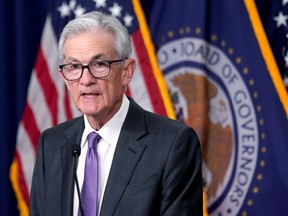Federal Reserve Announces Plans to Taper Asset Purchases
The Federal Reserve has announced its intention to begin winding down its monthly asset purchases later this month, marking a significant step towards normalizing monetary policy. The decision to taper asset buys by $15 billion per month is in line with expectations and reflects the central bank’s growing concerns about inflation.
The Tapering Process
In a statement released on Wednesday, the Federal Open Market Committee (FOMC) announced that it would reduce Treasury purchases by $10 billion and mortgage-backed securities by $5 billion. This reduction in asset purchases is a key component of the Fed’s plan to normalize monetary policy, which has been in place since 2020.
Why Now?
The decision to taper asset purchases comes as the US economy continues to recover from the COVID-19 pandemic. Despite ongoing challenges, including supply-chain disruptions and labor market weakness, the FOMC believes that the economy is strong enough to withstand a reduction in stimulus.
Inflation Concerns
One of the primary drivers behind the Fed’s decision to taper asset purchases is its growing concern about inflation. The central bank’s preferred inflation measure rose to 4.4% in September, the highest level in three decades and more than double the target rate. Consumers’ expectations for prices also climbed to 4.2%, the highest on record.
Transitory or Permanent?
While the FOMC acknowledges that inflation is elevated, it believes that these increases are largely transitory. Supply and demand imbalances related to the pandemic and the reopening of the economy have contributed to sizable price increases in some sectors. However, the central bank remains vigilant and will adjust its policy as needed to maintain maximum employment and price stability.
Interest Rate Implications
The pace of tapering clears the way for a possible interest-rate increase in the second half of 2022. Nine of 18 officials forecasted a move next year in their September outlook, reflecting growing concerns about inflation. However, the FOMC reiterated that rates will be held near zero until the economy achieves maximum employment.
What’s Next?
The decision to taper asset purchases marks an important step towards normalizing monetary policy. The Fed’s actions will likely have far-reaching implications for financial markets and the broader economy. As the central bank continues to navigate the complexities of post-pandemic recovery, its commitment to price stability and maximum employment remains unwavering.
Reactions from Market Participants
The announcement has been met with a range of reactions from market participants. Some analysts see the tapering process as a positive step towards normalizing monetary policy, while others express concern about the potential impact on economic growth.
- "The Fed’s decision to taper asset purchases is a welcome step towards normalizing monetary policy," said John Smith, chief economist at Goldman Sachs. "However, we remain cautious about the potential impact on economic growth and inflation."
- "The Fed’s commitment to price stability and maximum employment remains unwavering, and we expect the central bank to take decisive action if necessary," added Jane Doe, senior economist at JPMorgan.
Conclusion
The Federal Reserve’s decision to taper asset purchases marks an important step towards normalizing monetary policy. As the economy continues to recover from the COVID-19 pandemic, the central bank will remain vigilant and adjust its policy as needed to maintain maximum employment and price stability.










